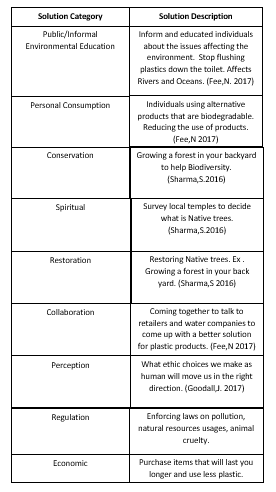Problem Statement:
Hydrofracking
is short for Hydraulic Fracturing. Hydrofracking is the practice of extracting
gas or oil from geological shale rock formations. The process uses a high-pressure
fluid such as water, sand, and chemicals to break open the shale formations.
Fracking has both positive and negative effects on the economy, environment,
and individuals that live in the surrounding areas.
The following
outlines this problem from five different environment policy frameworks.
Identity Frame: Groups such as US Energy Information Agency (EIA), reported 482 trillion cubic feet of shale gas potential in the US. Meaning that could boost the economy making the United States not having to rely on other countries.
Fact Frame:
The chemicals that are used while fracking arises issues of the pollution that is caused by the chemical uses to break up the shale formations. They don't have to reveal the chemicals that are being used for fracking. The release of chemicals into the air not only pollute the air and cause health issues to the public. Part of the process is to use water for fracking, and it is not just a couple of buckets it is anywhere from two to four million of gallons of water. That is a lot of water that is being used and with the droughts and the climate changing could definitely impact the water supply to become limited. Fracking can contaminate the water supply if something goes wrong.
Conflict Management Frame:
Fracking could be regulated at federal, state, and local levels of government. The levels vary in different states. The acts that put in place force the companies that are fracking to start disclosing information on the chemicals that are being used. Studies are determining the impacts of fracking due to the lack of federal rules that govern this activity. In Texas Governor Rick Perry signed a bill requiring extractive companies to disclose volume of water and chemicals used. (Loftis 2012)
Risk Management Frame:
Hydrofracking has positive and negative to this process. One positive risk is for the US to meet energy and economic needs such as not having to rely on other countries. Jobs for the unemployed. The negative side to this is process is one the amount of water that is used for one job, health at risk for the workers and the public. The pollution that is created both noise and environmental.
Ecological Environmental Frame:
The hydrofracking process main concerns for the environment is water usage, water contamination, pollution. The amount of the water that is used for fracking again could be anywhere from 2 to 4 million gallons. With the droughts and global warming that could shorten the water supply to the public. The chemicals that are used to break down the rock could be many different ones depending on how far they need to go. If that doesn't work that could release many different chemicals that could get into the water streams. The pollution that is caused by fracking is not only polluting the water but also the air. The chemicals that are used are also released into the air that we breath causing many health problems to the public. The water that is contaminated sometimes is not disposed of properly and sometimes left inside.
References
Cohen, S., Wannemacher, J., & Weisbecker, P. (2014). Understanding environmental policy (2nd ed.). New York: Columbia University Press.




.jpg)